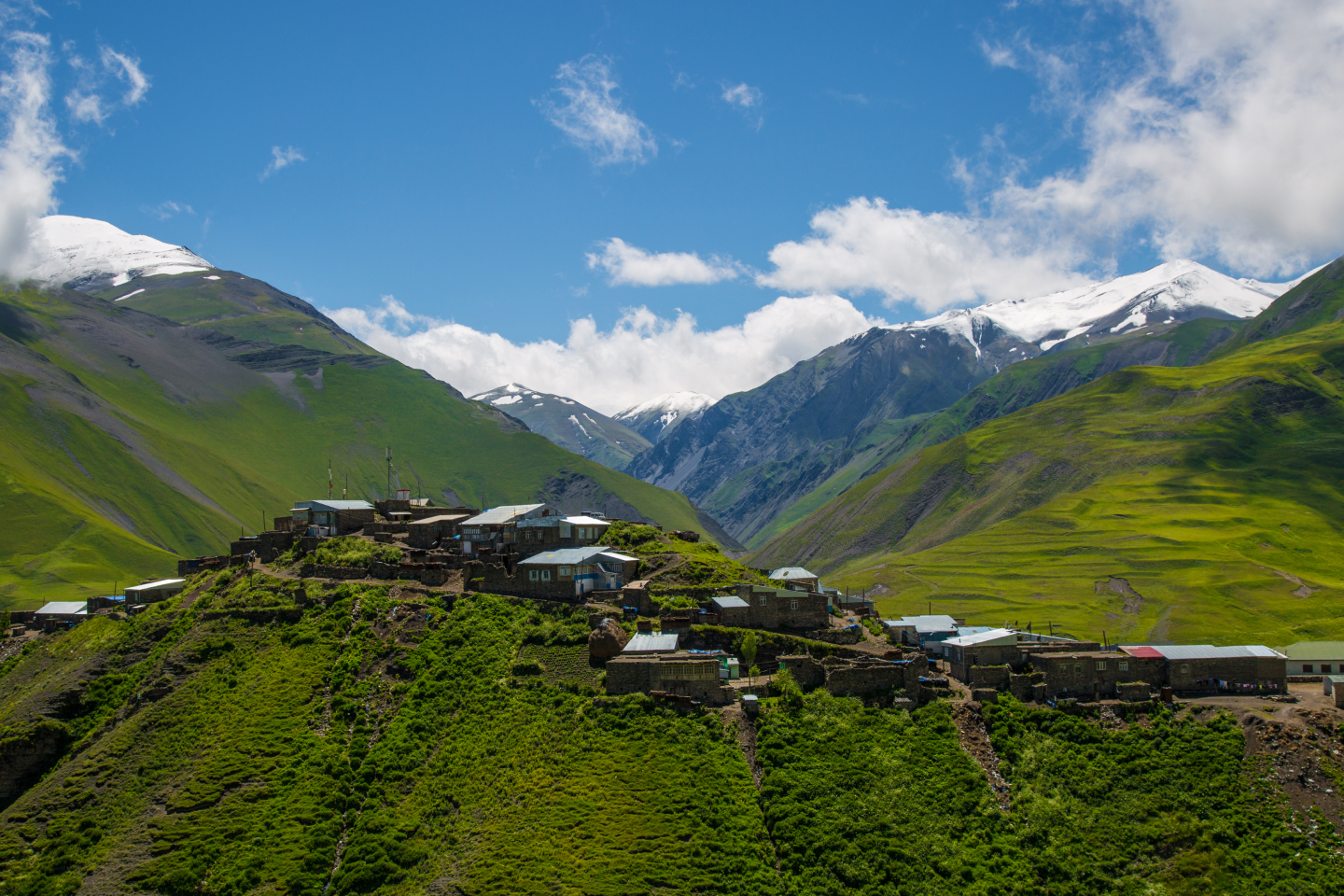1,200 people
225 km
2,150 m
 Guba
Khinalig
Guba
Khinalig
Historical and Ethnographic Museum
A total of about 2,000 exhibits reflecting the rich history, everyday life and customs of the local population are exhibited in the Museum of History and Ethnography, which was created on the initiative of a village resident. Read moreKhinalig’s knitted woollen socks
These colourful socks have practically become one of the symbols of the Khinalig people. The woollen patterned socks are incredibly warm due to their thick bottoms. When you visit Khinalig, make sure you acquire some as a special souvenir. Read moreUnique architecture
One of the highlights is the distinctive architecture of the village, made up of cosy homes built very closely together. Often, the roof of one house forms the courtyard of the house above it, with the door of one house opening onto the top of another. Read moreTourist activities
The ancient mountain village of Khinalig is one of Azerbaijan’s top ethnographic sites of interest. It has fascinating history and architecture, as well as glorious views across the Greater Caucasus Mountains. Read moreHaving historically practised transhumance, every year when the season changes, the majority of Khinalig families still migrate between the mountainous and lowland Aran regions of Azerbaijan along the so-called ‘Köç Yolu’ seasonal movement path. The Köç Yolu is 200 km long and passes through seven of Azerbaijan’s nine climatic zones and vastly varying natural landscapes.
The process of movement, which happens twice a year, in spring and autumn, lasts around two weeks each time. The people of Khinalig spend only four months in the village and the pastures around it. In general, around 10,000 people from several villages and 300,000 sheep move along this transhumance route, which passes through six administrative districts. These people are bearers of the intangible cultural heritage of Azerbaijan, transmitting the customs and traditions of their semi-nomadic culture from generation to generation.
Read more